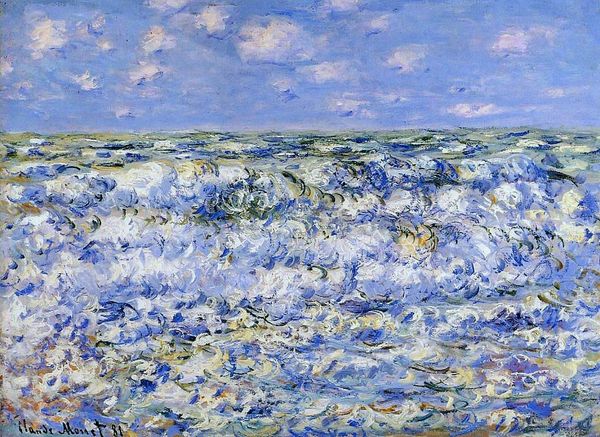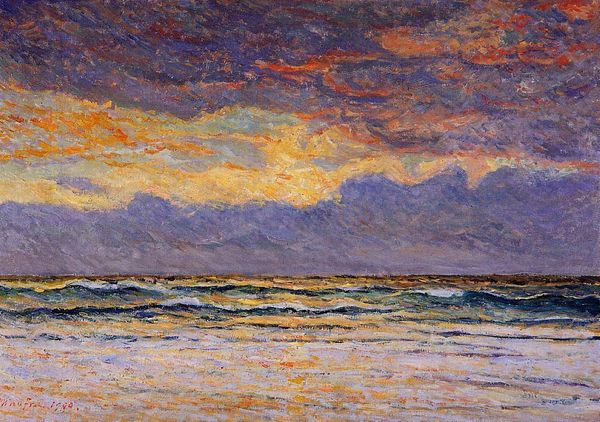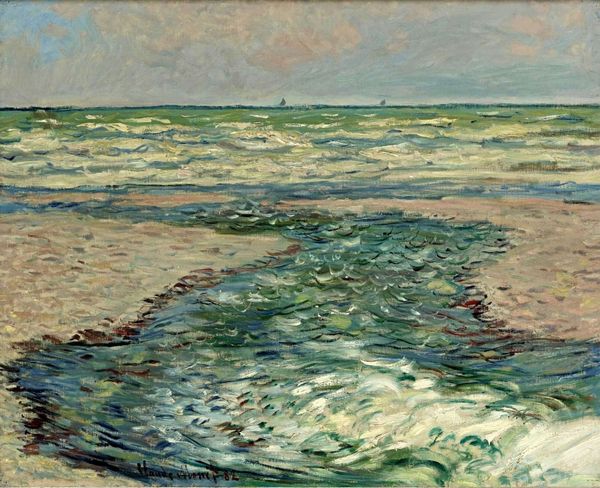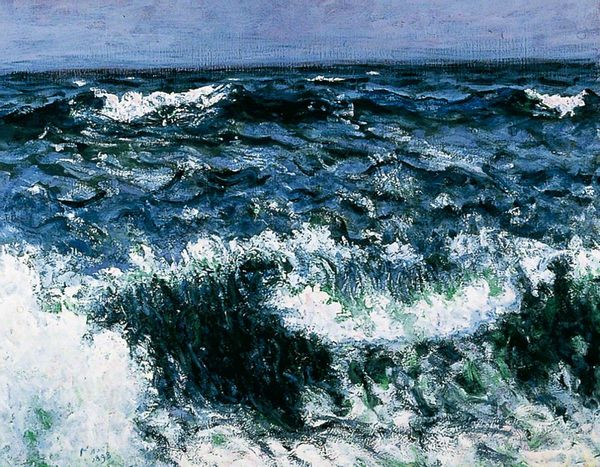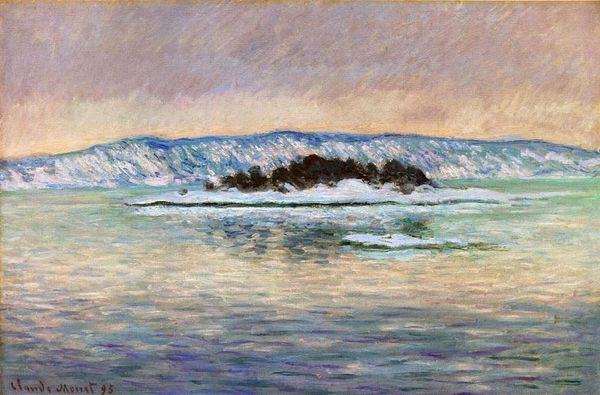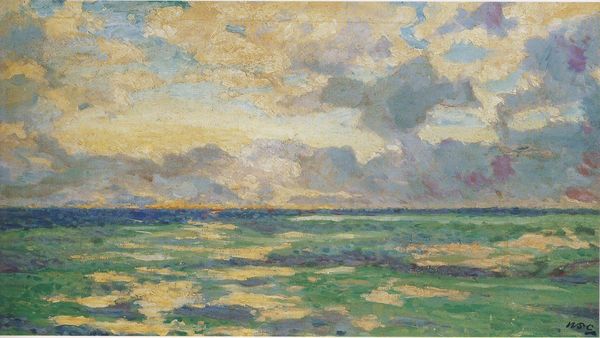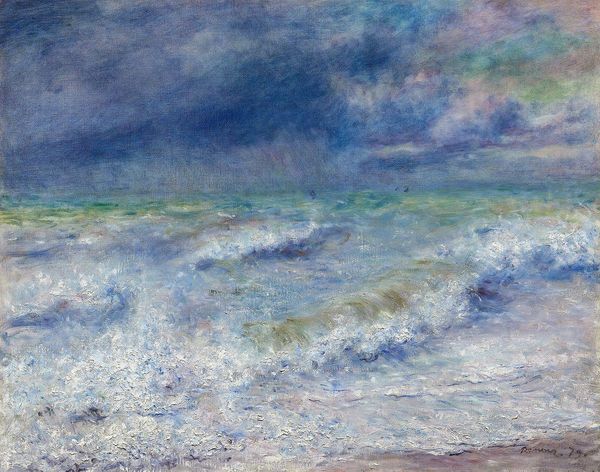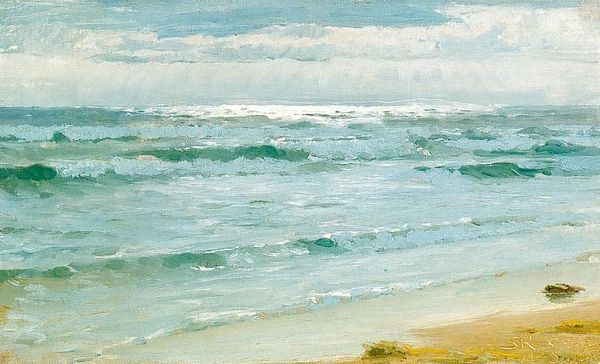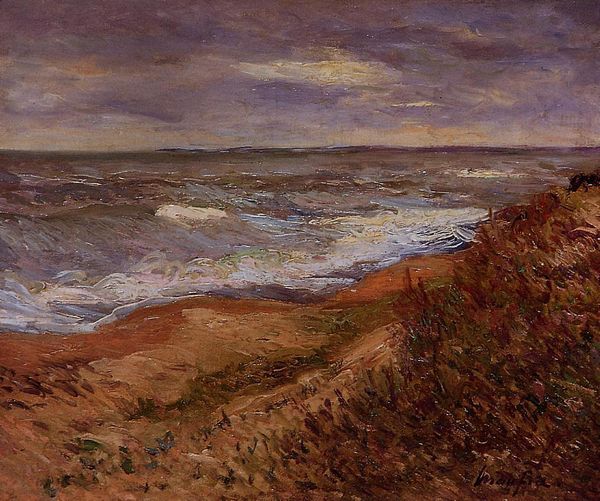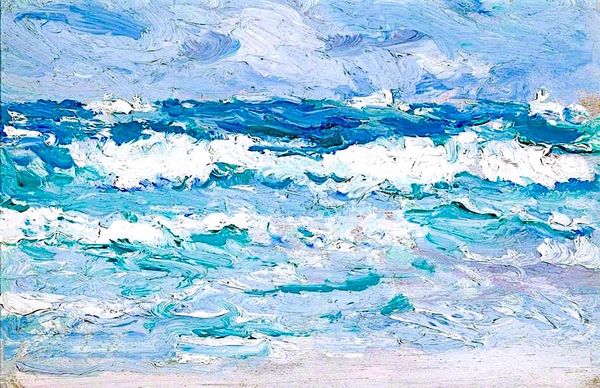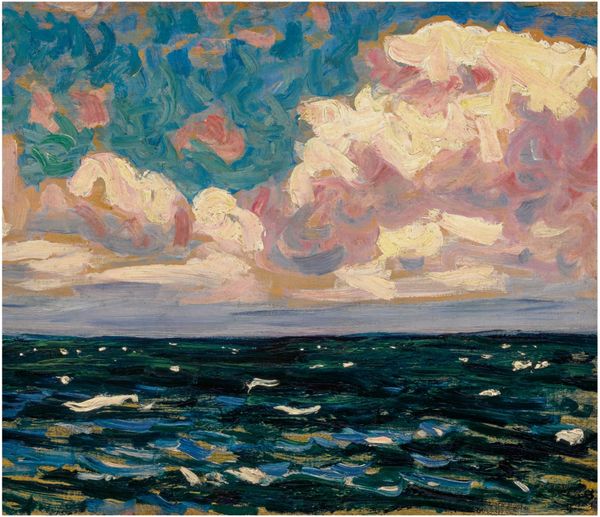
Copyright: Public domain
Editor: This is Claude Monet's *Rough Sea*, painted in 1881 using oil paint. I’m struck by the churning waves and the overall sense of unrest; it feels like a moment captured just before a storm. How do you interpret this work, particularly in its historical context? Curator: It's fascinating to consider this piece within the context of 19th-century industrialization and social upheaval. The "rough sea" isn’t merely a landscape, it's a metaphor. Monet, whether consciously or not, is reflecting the turbulence of a society grappling with radical change, the same change experienced, in unique ways, by individuals across lines of class, race and gender. The choppy brushstrokes, the lack of a clear horizon line - do these artistic choices further this feeling for you? Editor: I see what you mean; the broken brushstrokes really mirror that feeling of instability. So, are you saying that Monet’s seascapes could be understood as a subtle form of social commentary? Curator: Absolutely. Impressionism, on the surface, might seem focused on capturing fleeting moments of beauty. However, beneath that, there's often a critique of traditional power structures and a focus on lived experience. Consider, too, how access to leisure time and coastal landscapes was increasingly stratified. Who was allowed to *see* and experience this “rough sea?" This seemingly simple painting holds layers of complex questions about access and power. Editor: That makes me think differently about the subject. It's no longer just the sea, but an entry point to bigger ideas about society and who gets to participate in it. Curator: Precisely. And understanding these dynamics adds a whole new layer to our appreciation of Monet's work, doesn't it? Editor: It completely transforms my understanding; thanks for pointing out what was invisible to me before.
Comments
No comments
Be the first to comment and join the conversation on the ultimate creative platform.
